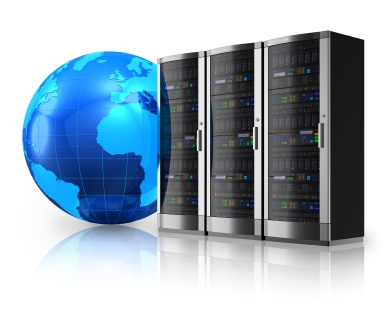Throughput level of SSD is much higher than that of HDD but its efficacy depends on the access type to a large extent. Direct comparison of hard disk drives and solid-state drives during tests gives ambiguous results. Traditional HDD performance tests usually target those area of application in which hard disk drives experience difficulties: delays related to revolution and seek time. SSD does not have such problems and one can say that solid-state drives offer much higher performance than hard disk drives in the majority of usage scenarios. If before SSD had a very short lifespan, in recent years it continuously increases. Now it is safe to say that solid-state drives are perfectly suitable for long term usage in servers.
Interfaces
Among the variety of interfaces available on the market, one three types are highly important for servers.
SATA (Serial Advanced Technology Attachment) – the successor of parallel ATA (PATA) systems. Modern SATA media are standardized to work at the rate of 600 Mb/s, giving it a throughput of 6 Gb/s to a hard disk drive. SATA are perfect in terms of price/quality and reliable in terms of read/write.
SAS (abbreviation of Serial Attached SCSI). This terms refers us to SCSI – the basis for modern server interfaces (Small Computer System Interface). SAS uses the same command sequence as SCSI and is adapted to fast serial connection. This interface offers throughput up to 12 Gb/s and throughput of 1200 Mb/s to disk. Therefore, it ensures advantage in more stable and faster protocol with higher speed, improved clutter resistance and ability of dual port connection of media to work in cluster. Using SAS is always necessary when high throughput and high reliability are important factors.
PCIe-SSD is not connected via ordinary SATA or SAS controllers, it is connected directly to PCIe bus on system’s server. It exceeds data transfer rate of SAS/SATA interfaces. PCIe-SSD drives allow to reach the speed of up to 1,5 Gb/s. However, because PCIe solid-state drives are connected directly to system bus, they cannot be bootable.
It should be reminded that SAS is backward-compatible with SATA, i.e. SATA and SAS disks can be connected to SAS controller. Nevertheless it does not work in reverse – SAS disks cannot be connected to SATA host adapters.
Size
Size of disks installed into server determines the capacity of its storage system and simultaneously its energy efficiancy. At present, servers use only two disk sizes: 3.5” and 2.5”.
3.5" is the most commonly used size. It allows placing maximum quantity of data - 4 TB. As rule, 3.5" disks are recommended for solutions with high requirements to storage volume. But at the same time it consumes more power than 2,5" disks and SSD are not available in this size. Main peculiarity of 3.5" hard disk drives is high capacity at more favorable rpice. You might as well say that 3,5” disks offer the best price per Gb.
2.5" is a popular size for HDD and SSD. Although these disks are only one inch smaller in size, they use considerably less energy than their 3,5” brothers. At present, maximum capacity of such disk is 2 TB. As compared to their bigger brothers, 2,5" hard disks are not only energy saving but also offer higher read/write speed when they operate in a network made of several drives. Therefore, they are perfectly suitable for use in systems with low energy consumption or for systems with required maximum performance.
Click here to read part I.
Click here to read part II.



 HDD and SSD
HDD and SSD
